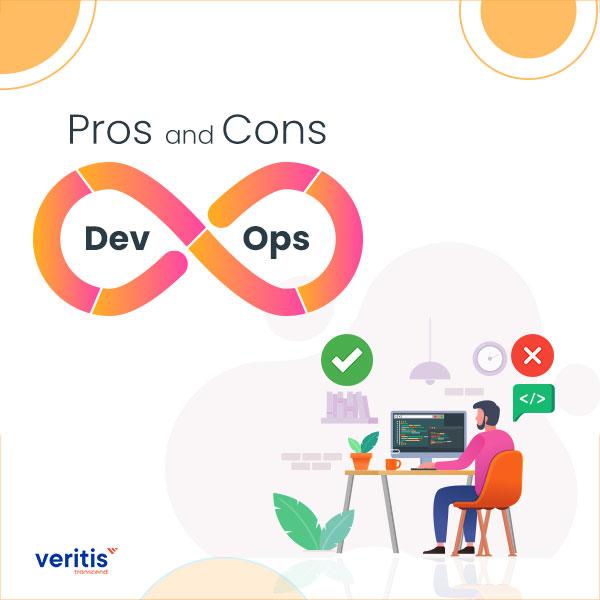Advantages and Disadvantages of DevOps: A Comprehensive Insight

Introduction
In the dynamic world of software development and operations, DevOps has emerged as a revolutionary practice, aiming to unify software development (Dev) and software operations (Ops). This methodology emphasizes communication, collaboration, integration, automation, and cooperation between software developers and IT professionals. While DevOps has been widely adopted for its numerous benefits, it also presents certain challenges. In this detailed exploration, we will delve into the advantages and disadvantages of DevOps, providing a balanced perspective for businesses considering its implementation.
Advantages of DevOps
1. Enhanced Collaboration and Communication
DevOps fosters a culture of collaboration and communication between the development and operations teams, breaking down traditional silos. This integration leads to a more cohesive work environment, enabling faster problem resolution, more efficient workflows, and a unified approach to achieving objectives.
2. Increased Efficiency Through Automation
Automation is a cornerstone of DevOps, helping to streamline the software delivery process. By automating repetitive tasks such as code integration, testing, and deployment, teams can focus on more strategic work, reducing the time to market and minimizing human error.
3. Improved Deployment Frequency
With DevOps, organizations can increase the frequency of deployments, thanks to the continuous integration and continuous delivery (CI/CD) practices. This means features, fixes, and updates can be delivered to customers more quickly and reliably, enhancing customer satisfaction and competitive edge.
4. Faster Time to Market
DevOps enables organizations to reduce the overall time from development to operation. By fostering a culture of continuous improvement and leveraging automated pipelines, businesses can accelerate product launches, meeting market demands more efficiently.
5. Higher Quality Products
Continuous testing in DevOps ensures that bugs and issues are identified and addressed early in the development cycle. This leads to higher quality products, as the development and operations teams work closely to ensure stability, performance, and user satisfaction.
6. Better Resource Management
DevOps practices allow for better utilization of resources, as automation frees up team members to tackle higher-value tasks. This not only optimizes costs but also maximizes the productivity of the team.
Disadvantages of DevOps
1. Cultural Shift and Resistance
Implementing DevOps requires a significant cultural shift within an organization. The change from traditional siloed teams to a collaborative DevOps environment can meet resistance from team members accustomed to the conventional ways of working.
2. Skill Set and Training Challenges
DevOps demands a wide range of skills, not only in coding and operations but also in using specific tools and practices. Finding and training personnel to become proficient in these areas can be challenging and costly.
3. Increased Complexity
While automation and CI/CD pipelines enhance efficiency, they also add a layer of complexity to the development process. Managing these automated processes and ensuring they work seamlessly across different environments can be daunting.
4. Security Concerns
Rapid deployment cycles can sometimes lead to oversight of security protocols. Ensuring that security is integrated into the development process (DevSecOps) requires additional focus and resources.
5. Initial Implementation Costs
Transitioning to a DevOps model involves initial costs, including investment in new tools, technologies, and training for team members. For some organizations, particularly small to medium enterprises, these upfront costs can be a barrier.
Strategies for Overcoming DevOps Challenges
1. Cultural Shift: Leaders can drive a cultural transformation by actively supporting DevOps practices. A gradual integration approach allows teams to adapt smoothly.
2. Phased Implementation: Start with pilot projects to ease into DevOps, followed by comprehensive education and training initiatives to ensure teams are comfortable with the new approach.
3. Enhanced Security: Regular audits can bolster security measures while integrating security teams early in the development process ensures a collaborative approach to security.
4. Cost Optimization: Resource optimization through automation and team collaboration helps manage costs. A thorough cost-benefit analysis highlights the long-term benefits of DevOps despite initial investments.
5. Continuous Monitoring: Automation streamlines monitoring and maintenance tasks. Regular process reviews further enhance efficiency in managing ongoing operations.
6. Simplified Toolchain: Careful selection of tools and comprehensive documentation simplify the software delivery toolchain, making it easier for teams to navigate and utilize effectively.
7. Access Management: Implement role-based access control (RBAC) to monitor and regulate access rights. Periodic permission audits strengthen security measures and ensure compliance.
Conclusion
DevOps presents a transformative approach to software development and operations, offering significant advantages such as improved collaboration, increased efficiency, and faster time to market. However, organizations must consider the challenges, including cultural shifts, skill requirements, and initial costs. By carefully planning the implementation and addressing these challenges head-on, businesses can fully leverage the benefits of DevOps, paving the way for more innovative, responsive, and competitive operations.
Frequently Asked Questions

About the Author
Hey, I'm Md Shamim Hossen, a Content Writer with a passion for tech, strategy, and clean storytelling. I turn AI and app development into content that resonates and drives real results. When I'm not writing, you'll find me exploring the latest SEO tools, researching, or traveling.
Trendingblogs
Get the best of our content straight to your inbox!
By submitting, you agree to our privacy policy.








